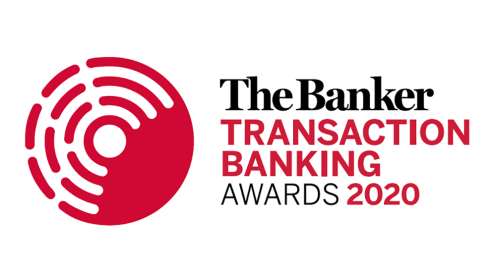Matthew Davies is the head of global transaction services (GTS), Europe, the Middle East and Africa, and global co-head of corporate sales, GTS at Bank of America (BofA).
Q: How are corporate treasuries adapting to the fast pace of change in technology and customer business models?
A: One thing that strikes me is the number of companies that are going through a large systems conversion; for example many are moving to SAP S/4HANA [an enterprise resource planning (ERP) system]. These are labour intensive, five-year projects and involve significant costs.
And it’s not simply a case of ‘lift and shift’ – corporates are looking at how to leverage cloud-based platforms as part of their digital transformation. Our GTS advisory team is helping clients to move beyond a cut-and-paste approach and modernise their processes.
At the same time, many companies are going through a shift in business models. Let’s take, for example, a sporting goods company. It traditionally sold through its stores, third-party outlets and a little online.
But there has been a shift in this mix, which necessitates more fundamental requirements across the wider organisation in terms of structure and subsequent treasury processes.
We have seen examples where companies have had to merge legal entities because a customer would buy something online (one legal entity) and then return it in-store, which was technically a different legal entity. This would create process and reconciliation challenges requiring changes to the legal entity structure to cope with the shift in business model.
The buy now, pay later (BNPL) schemes are also creating challenges for online retailers. Because customers don’t pay anything upfront and can return anything, they could order 10 similar items, keep one and return nine – which wouldn’t happen if they had to pay for all 10 up front. BNPL is creating a huge cost for retailers in inventory management and processing returns.
BNPL is creating a huge cost for retailers in inventory management and processing returns
Interestingly, this change in payment method has driven a different client behaviour. In response, retailers have had to re-engineer their processes around that new client behaviour, as well as the shift in business model.
Another example is in car manufacturing. In 10 years’ time, some treasurers are predicting that their company won’t be selling as many cars – it will be selling a service. Consider the automotive industry today: companies manufacture cars in factories, then distribute them through a network of dealers and franchisees, as well as offering some financing solutions to the franchisees.
Now the model is shifting to a subscription-based model, where a customer will pay a fixed amount monthly to their preferred car manufacturer.
There’s two ways the model works. One model is where the customer gains access to a range of cars, according to the level of service that they are paying for. A customer gets into the car, logs in and the whole car sets itself up for that customer, i.e. the seat and mirror positions, music, payment methods, and so on. The second model is where a customer still has their own car and pays a monthly subscription, which could include upgrade options.
Q: What does this mean for transaction banks?
A: The business model change is important for transaction banks because it’s a significant shift in the way the banks interact with their corporate clients, who are now dealing directly with the end consumer. This model cuts out the dealerships, wholesalers, supermarkets, retailers or other middlemen.
And instead of one payment for one car, for example, they have to process monthly subscriptions, direct debits and so on. The volume of transactions goes from the hundreds of thousands to the millions. This shift in business model can be a contributing factor to the upgrade of their ERP systems.
As transaction banks, we need to identify evolving trends and ensure we have the right solutions to meet those needs. For example, we’ve developed ‘Pay by Bank’, which can become part of the payment mix.
As many companies are selling more directly, they need to offer a wide range of payment options for their customers. At the same time, they’re looking to keep costs down. There is a cost that comes with accepting cards, which is lower when using a ‘Pay by Bank’-type solution.
We are spending a lot of time with our corporate clients as they reorganise their business. In the example above, that’s a huge project across multiple markets to merge legal entities, simplify and rationalise bank account structures, ensure the payment flows aren’t broken along the way, testing and so on. It keeps us busy.
Q: How can transaction banks act as a strategic partner to their corporate clients going through this transformation?
A: The BofA GTS advisory team includes previous group treasurers, so they have a wealth of direct experience with different companies in different industries. Clients like the fact that we bring cross-industry knowledge.
Our advisory team has learned so much by doing this multiple times and bringing their expertise to the table, raising questions to ensure clients are considering all angles and future possibilities.
Q: How is the corporate client relationship evolving with different areas of the bank?
A: Historically, corporates usually start their relationship with the investment banking division. When a company grew large enough, it would be covered by the corporate bank and they would then engage GTS.
What’s happening now is the investment banking relationship managers that are dealing with the much smaller, faster-growing companies, are very keen for us to help those companies with their expansion because companies are growing at an accelerated rate.
Previously, let’s say 20 years ago, a company would start in its home market and expand internationally over the next 10–15 years. Today, many companies go from domestic to international within the first six months.
And that’s where we can help because of our global footprint. It works well because the bank as a whole is enabling clients’ growth as their needs get more complex and more international.
Q: With the changing macroeconomic environment, how can BofA support its corporate clients through the expected market turmoil?
A: It was the pace of change, not so much the level, which has created some of the challenges in the market. From our perspective, we always find that in times of uncertainty clients will remember when you’re there for them – and they remember even longer when you’re not there for them.
We see this as a crucial period for being close to our clients and making sure that we can fully support them, whatever their needs might be.
clients will remember when you’re there for them – and they remember even longer when you’re not
In times of stress, such as the higher-rate environment which means the cost of debt is increasing, treasurers are going back to basics and focusing on areas such as liquidity management.
They need to make sure that there isn’t idle liquidity sitting around; they want to centralise their cash position and pay down debt. So, we spend time with clients ensuring that their liquidity structure is as efficient as can be.
The other back-to-basics effort is working capital, as well as supply chain stability. Higher interest rates will always impact the lower-rated, smaller companies the most. Thus, many big companies are keen to put supply chain finance (SCF) programmes in place, so that their key suppliers have access to well-priced liquidity.
Traditionally, SCF has been more of a working capital play, when a corporate could negotiate better terms with their suppliers. In the current environment, it’s much more of a supply chain stability play.
Q: Do you think that SCF technology/solution improvements have solved the onboarding issues for the long tail of the supply chain?
A: It’s still a challenge because, ultimately, it’s logistically difficult to sign up the long tail of small suppliers.
To address this issue, we take a complete accounts payable (AP) download from a client and then analyse it, because we know who is already signed up to an SCF programme. So that provides a known list of companies that do SCF, plus identifies others that are prime targets for SCF.
At the tail-end, we’ll know which ones accept cards. Then we can piece together an overall comprehensive end-to-end solution, with the bigger clients on an SCF programme and the tail-end on card, that covers the entirety of the corporate’s AP.
It’s certainly a developing market for our clients, but it’s also an interesting time for transaction banking.







